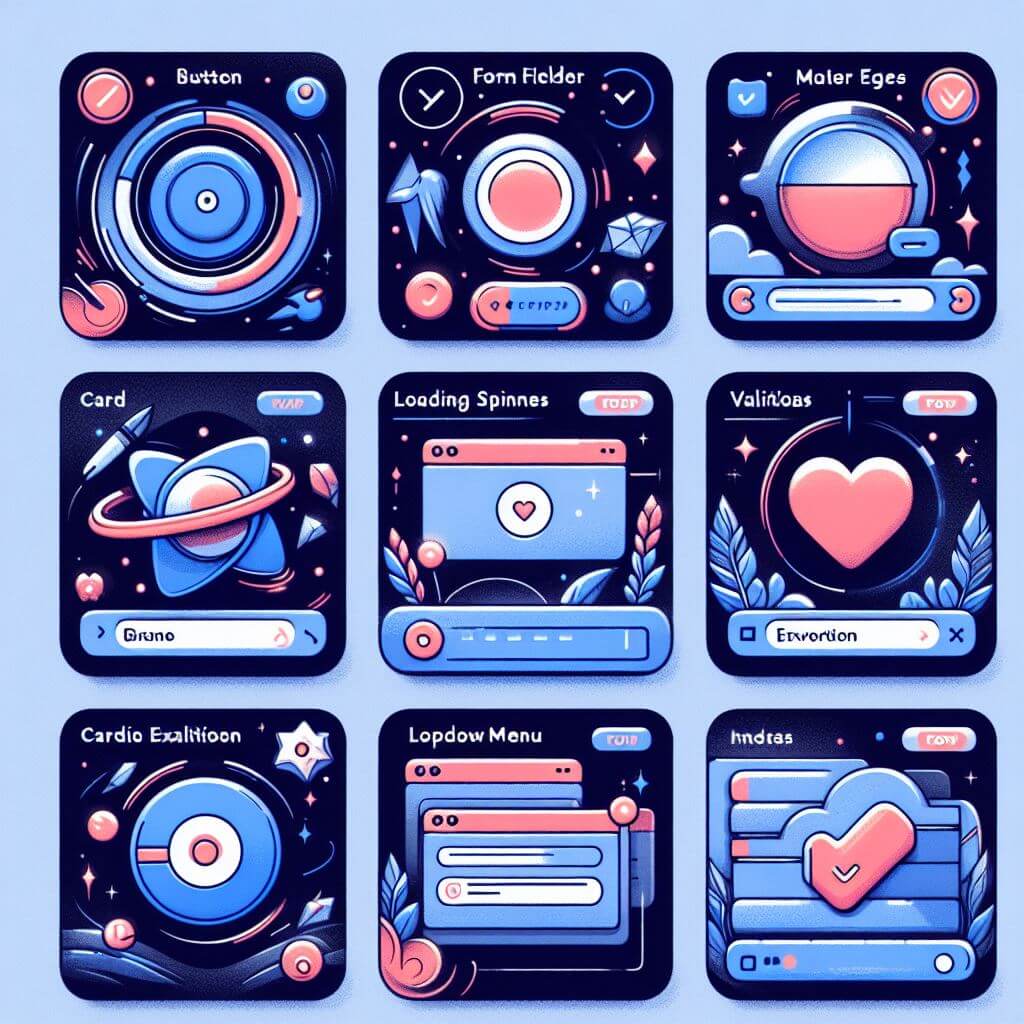Understanding Microinteractions
Microinteractions, often overlooked in the grand scheme of web app design, are the unsung heroes that can make or break user experiences. Let’s delve deeper into what microinteractions are and why they matter so much.
Microinteractions are the tiny details that make up the fabric of user interaction within web applications. They are the small, almost imperceptible responses that occur when users engage with different elements of an app, such as clicking a button, filling out a form, or navigating a menu. These interactions provide immediate feedback, guiding users through various actions and helping them understand the app’s functionality intuitively.
Microinteractions add depth and richness to interactions, making them more engaging and satisfying for users. Microinteractions bridge the gap between user input and system response, creating a seamless flow that enhances usability and encourages continued engagement.
Creating effective microinteractions requires careful consideration of several factors:
- Purpose: Clearly define the purpose of each microinteraction and how it contributes to the overall user experience.
- Clarity: Ensure that microinteractions are clear and intuitive, providing users with the information they need to understand their actions and the app’s response.
- Consistency: Maintain consistency in design language and interaction patterns across the app to avoid confusion and enhance usability.
- Performance: Optimize microinteractions for performance to ensure smooth animation and responsiveness across different devices and platforms.
- Accessibility: Consider the needs of all users, including those with disabilities, when designing microinteractions. Ensure that they are perceivable, operable, and understandable for everyone.
Importance of Microinteractions in User Experience
At their core, microinteractions serve as the connective tissue between users and the digital environment they navigate. By providing immediate feedback and guidance, microinteractions create a sense of responsiveness that fosters engagement. When users click a button and see it animate or hover over a menu item and observe a subtle change, they feel a tangible connection with the app, making interactions more meaningful and satisfying.
Microinteractions play a vital role in building trust between users and the app. By providing clear feedback and confirmation of user actions, microinteractions reassure users that their input has been acknowledged and understood. This transparency instills confidence in the app’s reliability and responsiveness, encouraging users to explore further and interact more freely without fear of unintended consequences.
In the fast-paced world of web applications, users expect efficiency and seamlessness in their interactions. Microinteractions play a key role in streamlining user workflows by providing subtle cues and guiding prompts that help users navigate complex processes with ease. Microinteractions make the user journey smoother and more intuitive.

One of the primary functions of microinteractions is to prevent errors and alleviate user frustration. By providing real-time feedback and validation, microinteractions guide users toward successful outcomes and help them avoid common pitfalls. For example, a form field that displays a validation message as soon as the user enters invalid data prevents errors before they occur, saving users time and frustration.
Beyond their functional benefits, microinteractions also have the power to evoke emotional responses from users. Delightful animations, playful sounds, and unexpected surprises can create moments of joy and delight that leave a lasting impression. These emotional connections cultivate brand loyalty and advocacy, as users associate positive feelings with the app and are more likely to recommend it to others.
Leveraging Microinteractions for Better Interaction Design
Microinteractions excel at providing users with instant feedback and confirmation, ensuring that their actions are recognized and understood by the app. By incorporating subtle animations, changes in color, or visual cues, you can guide users through their interactions and reassure them that they’re on the right track. This real-time feedback instills confidence in users, leading to a more positive overall experience.
Navigating through complex processes or workflows can be daunting for users, but microinteractions can make it a breeze. By strategically placing guiding cues and visual prompts throughout the app, you can help users understand their progress and next steps. Progress indicators, tooltips, and instructional animations are just a few examples of microinteractions that can guide users through even the most intricate tasks with ease.
Injecting a bit of whimsy and personality into your web app can go a long way in delighting users. Microinteractions provide the perfect opportunity to add these delightful details. These small surprises can make the user experience more enjoyable and memorable. By incorporating these unexpected moments of delight, you can create a stronger emotional connection with your users and set your app apart from the competition.
Smooth transitions between different app states or screens are essential for maintaining continuity and flow in the user experience. These microinteractions help users navigate through the app effortlessly, reducing friction and enhancing engagement.
Incorporating microinteractions thoughtfully also means considering the diverse needs of your user base, including those with disabilities. Ensure that microinteractions are accessible and inclusive by providing alternatives for users who may have difficulty perceiving or interacting with certain elements. For example, offer options to adjust the speed or intensity of animations, and ensure that all interactive elements are keyboard accessible and compatible with screen readers.
Best Practices for Implementing Microinteractions
Microinteractions should enhance the user experience without overshadowing the primary content or functionality of the app. Avoid excessive animation or flashy effects that can be distracting or irritating to users.
Consistency is key to a cohesive user experience. Ensure that microinteractions are applied consistently throughout the app, following established design patterns and visual guidelines. This helps users develop familiarity with the interface and reduces confusion.
Consider the needs of all users, including those with disabilities, when designing microinteractions. Ensure that animations are not overly fast or complex, as they may pose challenges for users with certain cognitive or visual impairments. Provide options to disable or adjust animations for users who prefer a more static interface.
Before deploying microinteractions in a production environment, conduct thorough usability testing to gather feedback from real users. Use this feedback to iterate on your designs and refine the microinteractions for optimal usability and effectiveness.